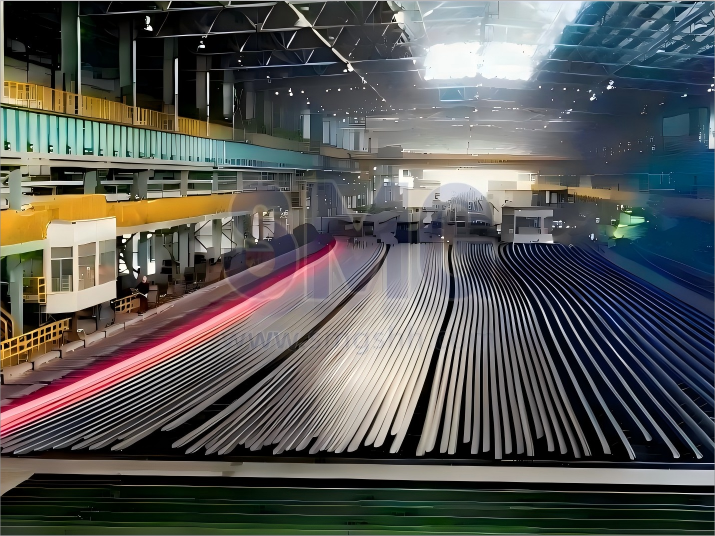
Date: 2025/7/14

Category: Metallurgical encyclopedia terms

Views: 61
After years of research, China now implements full-process hydrogen control during smelting (hydrogen content strictly below 1.5×10-4%, far lower than the critical value of 2.0×10-4%), combined with pile cooling of continuous casting billets. This allows trace hydrogen to fully precipitate during crystallization and pile cooling. Consequently, modern rail production has eliminated slow cooling, adopting offline pile cooling or online cooling on walking beam cooling beds.
New cooling bed equipment incorporates a pre-bending mechanism at the entrance to counteract bending induced by uneven cross-sectional temperatures, significantly reducing pre-straightening curvature and post-straightening residual stress. Rails without pre-bending exhibit approximately twice the residual stress of pre-bent rails, with base residual stress accelerating the propagation of transverse cracks (primary or secondary) and leading to rail fracture.
Cooling Process Flow of Rails on Walking-Beam Cooling Bed:
(1)Entry Handling: Finished-rolled rails (rail head facing cooling bed) are transported via post-mill roller conveyor to the entry roller table for positioning and stoppage, with simultaneous removal of the rolled tongue at the head.
(2)Pre-bending & Loading: A loading car equipped with a pre-bending mechanism lifts the high-temperature rail (≈800°C) and transfers it parallelly to the entry section of the cooling bed. A dynamic pre-bending device applies reverse curvature to compensate for bending deformation caused by cross-sectional temperature differences.
(3)Stepwise Cooling: The walking beam advances the rail in a "Z"-shaped path via lift-translate cyclic motion (adjustable step distance), enabling uniform natural cooling. Rail temperature decreases gradiently from the finishing rolling temperature to 150-200°C during this process.
(4)Forced Cooling: At the cooling bed exit, high-pressure axial fans perform directional air-jet cooling to ensure the rail temperature drops below 80°C, eliminating residual thermal stress.
Discharge & Transfer: A hydraulic unloading car at the exit lifts the cooled rail and transfers it parallelly to the output roller table for subsequent straightening. Total cooling time ranges from 40-60 minutes, depending on ambient temperature and rail specifications.


Phone



Address